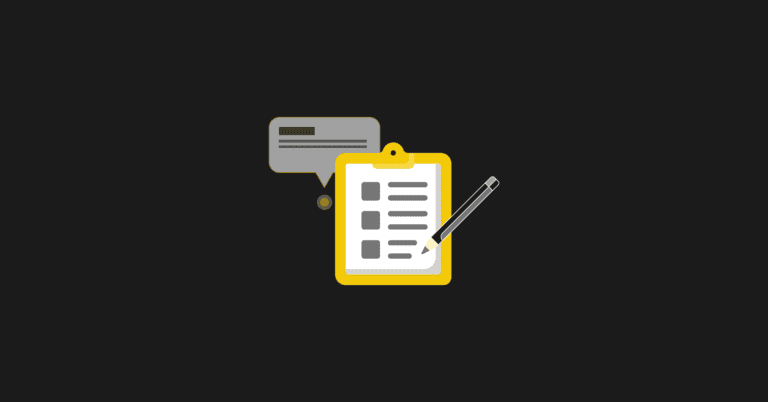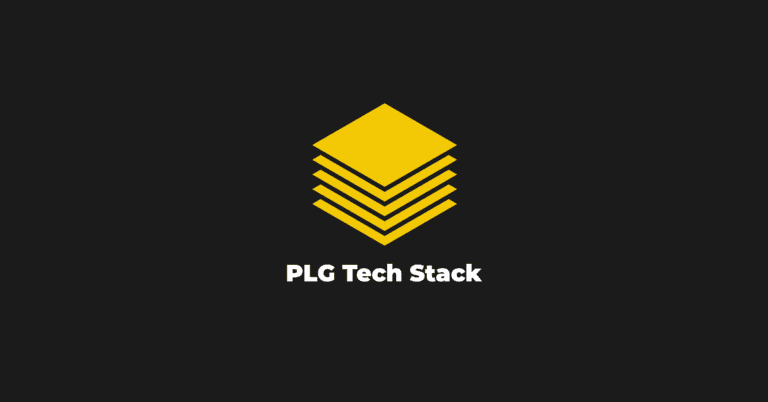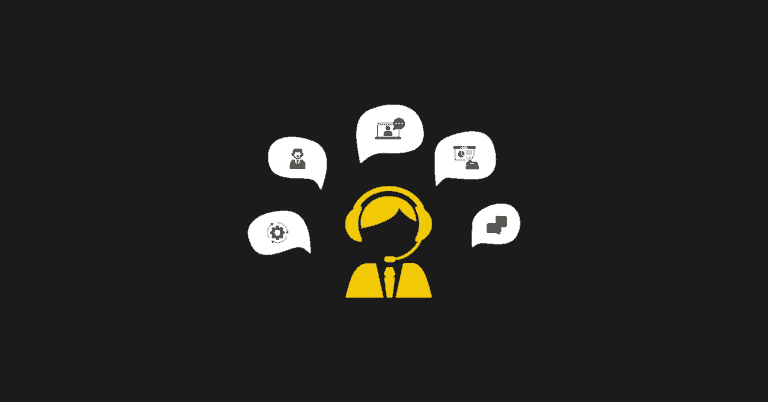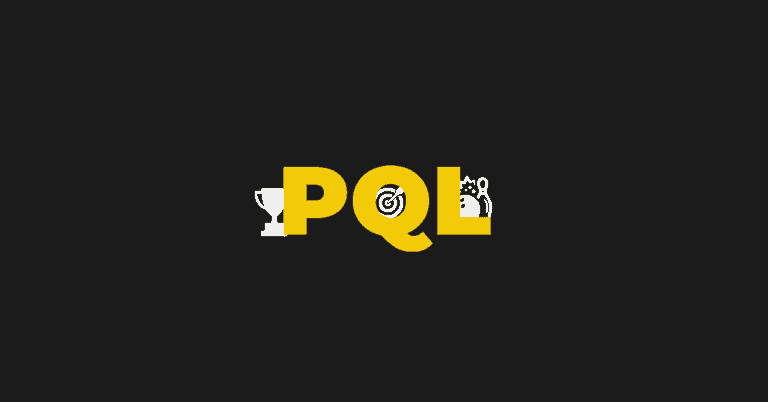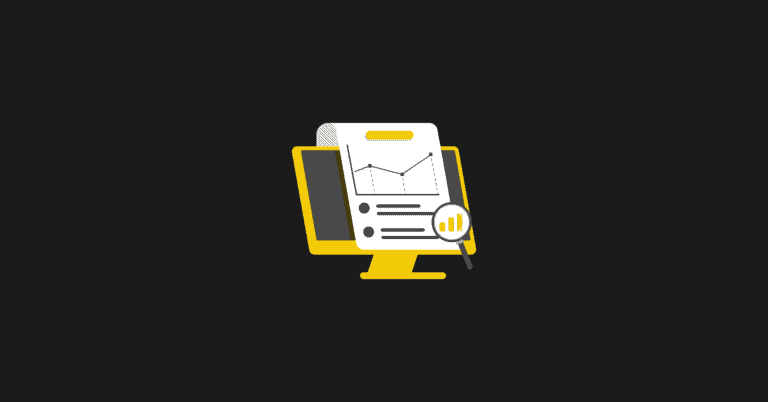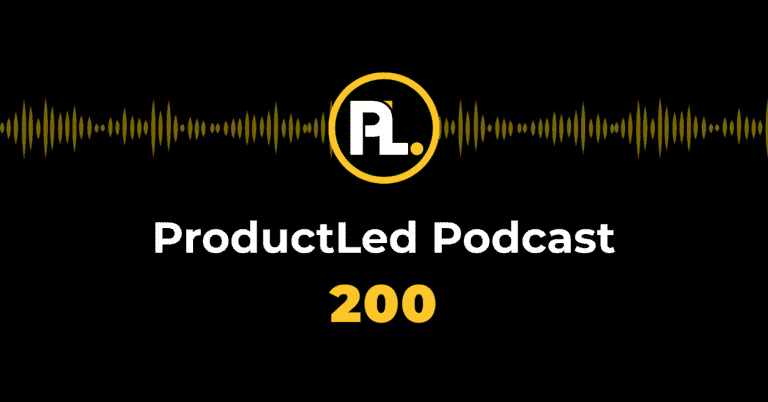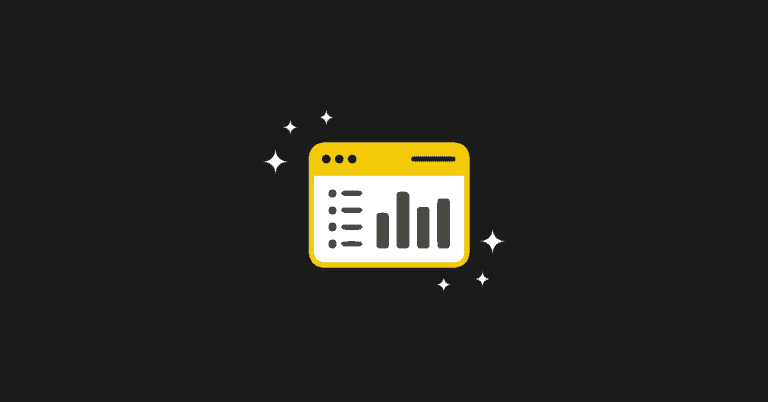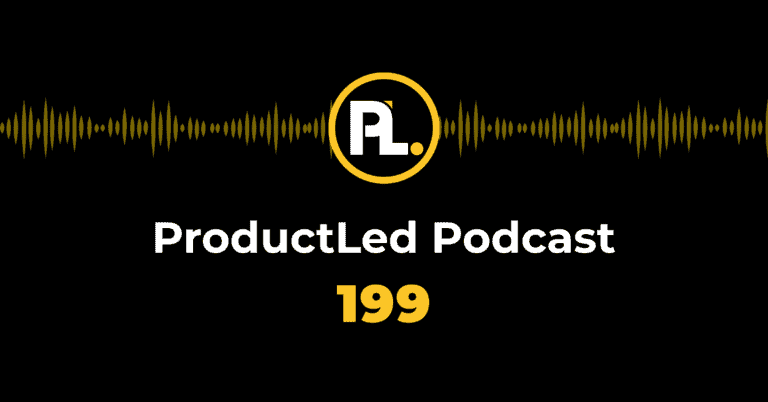Are you adopting the best product-led model for your user base or the most popular?
Businesses new to the product-led growth journey tend to adopt the most popular product-led model instead of the correct one for their users.
Maybe it's a free trial. Or perhaps it's freemium.
But did you know there are actually six product-led models you can choose from?
- Opt-In Free Trial
- Opt-Out Free Trial
- Usage-Based Free Trial
- Freemium
- New Product
- Sandbox
Your product-led model forms the foundation for your product-led strategy, and if it doesn’t fit your product or your target user base, you can actually repel your key users.
When Freemium Goes Wrong: The Case of PandaDoc
Forty-eight hours after the “stay-at-home order” was announced, the PandaDoc team decided to bring a Freemium Product to market. In less than 24 hours, they launched it alongside their Time-Based Free Trial.
PandaDoc’s Freemium Product allows users to digitally sign e-docs, just as the businesses of the world were forced to run their companies remotely.
But in the following months, onboarding and conversions decreased. It didn’t make sense because they had a product the world needed – and it was 100% free.
So what went wrong?
Before we dive into why the Freemium Model negatively affected PandaDoc, let's take a moment to introduce The Bedrock Framework to find the best product-led model for your business.
Creating A Bedrock For Growth in 7 Steps
Just because you understand the six product-led models doesn’t mean you know how to align them with your product and users. As PandaDoc shows, you can literally give a great product away for free and still fail if you don’t have a solid foundation.
The Bedrock Framework has seven actionable steps to lay a solid base (or bedrock) for success in your product-led journey.
Let’s take a look at each of the seven steps:
- Begin by defining end-user success
- Embrace the starting point
- Describe the problems in the user journey
- Recognize your 4-Key Milestones
- Observe the beginner, intermediate & advanced problems
- Consider how to solve your beginner’s problems
- Know which model solves your beginner's problems
Once you’ve completed each of the steps, you should defend why that’s the best model. If you don’t have an airtight defense, it’s time to dig deeper.
If you need help choosing which free model is right for your business, be sure to check out our ProductLed Accelerator training program. It's an actionable course followed by mentoring throughout the year to stay on track and find success, with an entire workshop dedicated to choosing the free experience that's right for you. Learn more here.
Step 1: Begin By Defining End-User Success
Your product’s success hinges on solving a problem for your users. Every product-led business should start with an end-user success statement.
For example, in a sales-led company, success is closing a deal.
But in a product-led company, success takes on a whole new meaning. In a PLG model, companies live or die on user success, so your bedrock must be set up to support it.
If users can't see the value of your product, you won't be able to make the model work. But if you can deliver value upfront – before a paywall – you won't just have a new customer; you'll have an advocate.
Your users' success will eventually become your success.
Here are some examples of what top companies define as end-user success.
| Company | End-user success |
|---|---|
| Slack | Creating a better, more connected way to work. |
| Miro | Helps remote teams get work done. |
| Zoom | Bring together teams. |
| Codecademy | Learn to code anything. |
A good way to see if your users are reaching end-user success is by figuring out your Product Adoption Indicator (or PAI). The PAI is an early but strong signal that users will likely use your product going forward.
For example, if you offer online courses you would track:
- The percentage of active subscribers: How many users are active every month?
- Course completion rate: Can the user pass the assessments at the end of the course?
By tracking the number of active subscribers you can predict:
- Churn
- Retention
- And see which profiles are dropping off
These also happen to make up the metrics that signal end-user success.
By tracking the course completion and user pass assessments at the end of each course you are assessing:
- Course efficacy
- Outside value of the completion certificate
This will help you understand the value of your product in the marketplace.
Step 2: Embrace the Starting Point
How can you know if your bedrock is stable if you don’t know where it came from or what it’s made of?
Every user’s journey begins with a problem. That’s where your starting point lies. What was the problem that motivated you and your team to create a solution in the first place?
If you are still having trouble figuring out where exactly your starting point is, ask yourself the following three questions.
- What value do I bring to my customers?
- How do I communicate that value in a relevant way?
- Do I deliver on that value?
As you can see in the graph below, each step builds on the other.
For example:
- Zoom was designed because someone needed to hold online meetings for teams that lived apart or worked remotely.
- Slack was created because someone had problems internally communicating with their team.
- Miro was created because someone was tired of clunky presentations and wanted a better way to collaborate.
| Company | End-user success | Starting point |
|---|---|---|
| Slack | Creating a better, more connected way to work. | Frustrated with slow communication internally. |
| Miro | Helps remote teams get work done. | Presentation overload. |
| Zoom | Bring together teams. | Emails aren’t cutting it anymore – nobody’s on the same page. |
| ProductLed | Build successful product-led businesses. | What’s PLG? |
Now try to imagine the user type you created the solution for.
Is there more than one? If so, do the two user types behave differently? Are their needs different or similar?
Step 3: Describe Problems In The User Journey
While it’s easy for you and the team to understand the value of your product, people coming in from the outside need guidance to see how your product can help their business. When users don’t understand this weakens or disrupts your bedrock.
Your user's journey should lead the user to the value of your product (or their “Aha!" Moment) in the shortest possible time. As you go through your users’ journey on your site, consider the following questions below.
- Are you asking them to fill out irrelevant information to find their value acquisition? For example, do you really need a user's address, gender, or date of birth?
- Does your site channel them to the key features that can help solve their problem? Or are you using your landing page to talk about how awesome your company and product are?
- Are there any annoying or distracting pop-ups that block or delay the value discovery of the user? When a user arrives on your landing page, is there a distracting pop-up that may only distract a new user while appreciated by an intermediate or advanced user?
- Think beyond your product. What will the user need to overcome to achieve end-user success? Is there anything you can do to help accelerate their value acquisition?
Typically some problems you will be able to solve immediately, and others you’ll need to solve later.
Here are some real-life examples:
| Company | End-user success | Starting point | User Journey Problems |
|---|---|---|---|
| Slack | Creating a better, more connected way to work. | Frustrated with slow communication internally. | Inviting a team. Messaging the team. Setting up channels. Sharing files. Searching for files. Paying for a product. |
| Miro | Helps remote teams get work done. | Presentation overload. | Starting with a blank board. Choosing a template. Finding another reason to use Miro. Sharing a board with a colleague. Presenting with Miro. Doing a team activity with Miro. |
| Zoom | Bring together teams. | Emails aren’t cutting it anymore – nobody’s on the same page. | Downloading zoom.Setting up your account. Setting up your first meeting. Sharing your zoom URL with someone. Hosting your first meeting. Integrating zoom into your workflow. |
| ProductLed | Build successful product-led businesses. | What’s PLG? | Understanding if PLG is right for them.Learning the fundamentals of PLG.Identifying the right product-led model. Deciding on the best value metrics. Getting users to quick value. Get team buy-in. |
Now take a minute to think about all the problems with your user’s journey. Are there any problems you can fix immediately?
Step 4: Recognize Your 4-Key Milestones (Along the User Journey)
Humans typically have four significant milestones:
- Baby
- Child
- Teen
- Adult
Like humans, the user journey in a product-led business has four milestones that consist of
- Beginner
- Intermediate
- Advanced
- End-User Success
These make up the layers of your bedrock. For example, at ProductLed, our key milestones are:
| Beginner Milestone | Intermediate Milestone | Advanced Milestone | End-User Success |
|---|---|---|---|
| Understand the fundamentals of PLG. | Build a product that sells itself. | Build a product-led organization. | Build a successful product-led business. |
Without overthinking it too much, list out the milestones for your product. Then revisit your user journey and try to identify the obstacles your user may encounter in reaching each milestone.
This is effective in helping you anticipate your user's needs and lift barriers in the user journey so more users can find success.
Step 5: Observe the Beginner, Intermediate, & Advanced Problems
To further the understanding of your users' journey, use the list below to categorize the problems associated with each milestone.
- Beginner
- Intermediate
- Advanced
Depending on which part of the journey your user is at, different needs and obstacles arise. These obstacles are impurities that can weaken your bedrock.
To fully anticipate your user's needs, it’s crucial to identify problems that may occur with each type of user and how to help them solve their problems to find value.
- Beginner Problems: These are struggles your user may have during the first part of their journey. Once the user completes these problems, they should be able to solve their problem in a meaningful way and experience the value of your product.
- Intermediate Problems: These make up the majority of your entire problem set. While they are challenging to complete, what differentiates them from Advanced Problems is that the majority of your users will deal with intermediate problems at some point if they are making meaningful progress with your product.
- Advanced Problems: These are problems that only a minority of your users will encounter.
Beginner problems act as guideposts to the model that will help lift obstacles in your user’s journey to discovering the value of your product.
Here’s a real-life example:
| Company | Beginner Problems | Intermediate Problems | Advanced Problems |
|---|---|---|---|
| ProductLed | Milestone: Understand the fundamentals of PLG. Problems: How to know what PLG is. How to get started. How to know if PLG will work for my business. | Milestone: Build a product that sells itself. Problems: How to build a business case for PLG. How to get users to a quick win. How to set up PQLs. | Milestone: Build a product-led organization. Problems: How to build a product-led culture. How to set up your org structure for PLG. How to set up a product-led sales team. |
Under each of your milestones, take a moment to list each problem and categorize that problem accordingly.
Are you set up to solve the problems for new users, paving the way for end-user success? Or are your resources more focused on your intermediate problems?
While caring for your majority base, are you helping new users with product adoption?
This step can get big quickly, so here are some project managing tools you can use to keep your thoughts organized, prioritize, collaborate, and help identify problems within your user's journey.
| Project Management | Visual Mapping | Data Management & Analytics |
|---|---|---|
| Trello Productboard Notion Asana | Lucidchart Miro InVision Mural | BigQuery Snowflake Hightouch |
The proper tool can help advance most collaborative projects and help locate pain points in your user's journey. For more PLG tools to include in your tech stack, check out our ultimate list of 199 SaaS Tools for Growth.
Step 6: Consider How to Solve Beginner’s Problems
Based on the beginner problems we laid out in Step Five, hopefully, you have a clearer understanding of the struggles your users face to reach their next milestone.
So what can you do to help strengthen your bedrock with user success?
When brainstorming, leave nothing off the table. List everything and then see how and what is the most applicable for your users' problems.
Here’s a real-life example.
| Company | Beginner Problems | Solutions |
|---|---|---|
| ProductLed | Milestone: Understand the fundamentals of PLG. Problems: How to know what PLG is.How to get started.How to know if PLG will work for my business. | - Create a free PLG fundamentals certification. Cover the basics of PLG, what it is, how it works, and why care about it. - Create a simple quiz to allow people to understand if PLG is right for their business in minutes. |
While some companies will mix and match a couple, we recommend keeping it as simple as possible when starting. Try and master at least one model before getting fancy with several.
You’ll thank us later.
Step 7: Know Which Product-led Model Solves Your Beginner Problems.
Can you see which product-led model best supports your base layer of bedrock?
Before figuring out which product-led model would best solve your Beginners' problems. Be sure to understand the six available models, which we laid out in this article.
Out of the six listed below, decide which one makes the most sense for your set of Beginner's problems?
- Opt-In Free Trial
- Opt-Out Free Trial
- Usage-Based Free Trial
- Freemium
- New Product
- Sandbox
Now Review: Defend Why That’s the Best Model
Can you explain why the model you chose will create the most solid bedrock for your product and user base?
The idea behind the exercise is to create a solid argument for the model that you choose. Try and identify any underlying unconscious biases. If you can form a solid defense, then it’s most likely the correct model. If it’s not watertight, take some time to consider an alternative model.
Here are some questions that you can use to help form your defense of a model.
- Why is this model the best for your case?
- How is it better than the other models?
- How does it solve your beginners' problems?
- Does it solve all of your beginners' problems? If not, which ones does it leave behind?
- Does it accelerate the users' time-to-value or “Aha!" moment?
- Using the questions above, try and defend your model with your coworkers and see if it holds steady.
Now let’s look at three companies that switched up their product-led growth models to help leverage their product and user base.
Aligning Your PLG Model with Product & User-type
When executed efficiently, a solid product-led growth strategy produces results in the first few months, however, it can take around six months to a year to spot pervasive weaknesses. And do you really want to lose a year before you realize your bedrock is weak or doesn’t support your product and users?
Fortunately, companies have failed before us, and we can learn from them. By learning how to identify the warning signs, you can make minor adjustments and reinforce the strength of your bedrock to get back on track.
Let's go back to PandaDoc and two other real-life companies to see how they reinforced their bedrock to find success with their product-led growth models.
Finding Success In Freemium: PandaDoc
PandaDoc was running both a 14-day Free Trial and a Freemium Product simultaneously. This means users can choose between the two options.
For example, users who onboard the Freemium Product can also access a Time-Based Free Trial. Or, Free Trial users can downgrade to the Freemium Product. Both can upgrade to a paid plan at any time.
The idea is that the two free models build off each other: lovers of the Freemium Product will be curious about PandaDoc's other features, explore the plans, and sign up for a free trial, which leads to a paid plan.
Even though their product should have been more in demand than ever, they weren’t onboarding the number of Freemium Users they predicted. Upgrading wasn’t happening either.
What was going on?
While they had a solid product for remote work, the team never considered that user intent for Freemium Product users was different from Time-Based Free Trial users. So, in the beginning, they channeled all users into the same sales funnel…and it was unsuccessful.
PandaDoc took a step back and started studying user behavior and running experiments. They discovered they needed to segment their sales funnel between the two user types as they responded differently to prompts.
Specifically, Freemium Product users wanted to use the product immediately and have an immediate solution. Whereas free trial users took their time to make a pragmatic business-based decision.
With that discovery, PandaDoc got to work.
First, they made onboarding for Freemium Product users as immediate and straightforward as possible.
Then within the Freemium Product, they made it easy to upgrade and unlock trial capability.
And the changes worked.
PandaDoc started onboarding more users, which led to more upgrades.
The hybrid approach proved to be a growth driver once they made minor adjustments for each user segment.
So what did we learn from PandaDoc?
- Differentiate your product from the competition right away. PandaDoc allowed unlimited e-signatures in their freemium product. And to differentiate themselves from their competitors, they included integrated payments.
- Different product-led growth models attract different user types. PandaDoc studied user behavior and profiles to understand the differences between the users. They saw tangible results after segmenting user types, then modifying Freemium onboarding and upgrading prompts for each type.
- Conduct experiments to see which onboarding processes work the best. PandaDoc didn’t test until they noticed their low onboarding rates. Running the experiments earlier would have helped them avoid the time-consuming trial and error phase.
- Even when picking the correct model, most companies need to adjust to leverage either their product or user base. A culmination of a few adjustments can make a big impact on key metrics.
When Time-Based Free Trial’s Cost: Tettra
Tettra is an internal knowledge base that organizes your scattered company knowledge so you can use it to answer your team's repetitive questions right in Slack or MS Teams.
Tettra started in 2015 with a 15-day Free Trial Model.
A free trial requires a lot of setup and time with many knowledge-based products. Getting the whole team on board requires a “buy-in” and training time.
Unfortunately, the setup for the software was both time-intensive and labor-intensive for the user. Plus 15-days wasn’t enough time for users to see the value. As a result, users fell off and disappeared.
When Freemium Works
Tettra realized users weren’t experiencing the product's value within a 15-day window. And it didn’t look like 30-days would work either.
So they decided to try out the Freemium model.
Tettra realized their users needed to experience the value of their product before asking for money.
After running some tests, the team determined what features should be free to ensure users hit the “Aha!” moment. Then they launched it.
The Freemium Model attracted more users, and the team saw a direct correlation between users interacting with the software and increased conversion rates.
Let’s take a look at their results.
1: User sign-ups almost doubled. By Q1 of the following year, they increased 100% and continued to rise steadily throughout 2020.
2: Monthly Recurring Revenue (MRR) doubled in one year: When Tettra launched their Freemium Product, their MRR went down. But their “Upgrade MRR” started to rise slowly and eventually surpassed their new paid users (or “New MRR”).
.
3: Retention rates never dipped below 70%. Over the course of a year, Tettra consistently led with retention rates of over 100% (of prior year retention rates).
So what does their experience teach us?
- The Time-Based Free Trial didn’t work for Tettra because their users could never find value in the product before the trial ended. Their bedrock wasn’t built to support their product.
- When Tettra shifted its focus from collecting payments to providing value to the user, its user base grew.
- Their initial bedrock was built on the needs of the business instead of the needs of their users. Once they put the needs of the user first, growth of their user base followed, retention went up, and MRR followed.
Now let’s look at another example.
Knowing Your Key Users: MonitorQA
MonitorQA is a collaborative auditing and inspection software that helps businesses do safety and health audits from mobile devices. The team started with a Freemium product to attract small businesses and gain users fast.
The team noticed high churn with their Freemium Product, and they weren’t gaining user adoption. When they looked closer, they saw the users churning were small businesses, and the larger enterprises were sticking around.
After interviewing small business users who dropped off, the team discovered they fell into two groups:
- Their business was so small they could do everything in-house without the product.
- The Freemium Product met all their needs, so they didn’t need to upgrade.
Then came the feedback from their medium to large enterprise users.
- The Freemium version was too limited in its functionality for larger companies to use.
- When larger companies inquire through a website, it’s usually because they are ready to try a full-functioning product.
The Freemium Model was actually repelling their target users!
When Freemium Doesn’t Fit
Instead of turning their backs on product-led growth, they switched to a Time-Based Free Trial.
And the results were amazing.
According to Andrew Motiwalla, Co-Founder and Chief Revenue Officer, while the number of users onboarded dropped by 50%, MRR increased by over 110%.
The deals were fewer, but they were bigger. This freed up capacity for the support teams, as they were no longer bogged down by tire kickers and could focus on supporting their target users.
What did we learn from MonitorQA?
- Different users have different value gaps. MonitorQA created their Freemium Product, not fully considering how the value gap differs between small and large companies. Small businesses didn’t need their paid product, and larger enterprises wanted to try a fully functioning product.
- Conduct quality user research before adopting a model. The team didn’t do user research beforehand and spent a lot of time chasing a market that didn’t need their product.
- Pick the model for your user type. If they had dug into user research beforehand, they would have seen the Freemium Model didn’t fit their user type. Once they switched to a free trial, they onboarded fewer users but captured larger accounts.
As we can see even though a product-led model is popular it won’t necessarily fit your company.
So what’s the magic bullet?
Which PLG Model is Best?
Honestly, there’s no one-size-fits-all solution to a product-led strategy. They all work well, depending on the problem you are trying to solve.
PLG companies like Zoom have gone up against some of the biggest names in tech and have a 39.8% share of the video conferencing market. It’s not a fluke. They simply found the model that solves the problem for their users almost immediately.
Instead of asking, “Which model should we use?” start with “what do we need to do to solve our user’s problem?”
Still not sure where to start. Take a quick quiz to determine if your problem is best suited for a free trial or freemium and then work your way from there.
Remember, it's not about the model… it never was.
Please let us know how the seven-step Bedrock Method worked for you in the comments below. Were you able to find your model?
Did you encounter an obstacle that we didn’t cover?
What did we leave out?


